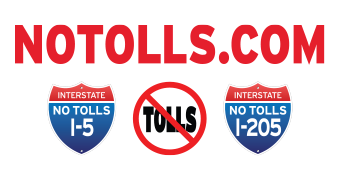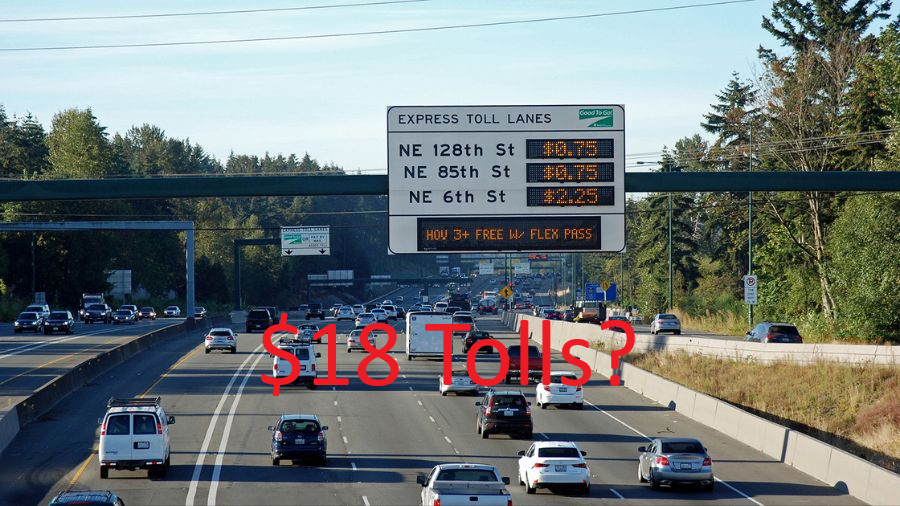Raising the maximum tolls to $18 is in play
Oct 8, 2024 — MyNorthwest
The maximum tolls on Interstate 405 (I-405) and State Route 167 (SR 167) went up to $15 earlier this year, but it’s likely that rate will be going up again next year.
Washington’s tolling system is going through a massive growth spurt, and there are going to be significant changes over the next year. The state is currently widening I-405 between Bellevue and Renton and updating the tolling equipment on SR 167.
Once completed late next year or sometime in 2026, there will be a complete tolling corridor that stretches from Lynnwood to Puyallup.
In order to make that happen, the state needs to standardize the tolling system. Right now, there are different rules for I-405 and SR 167 regarding peak hours, carpool requirements and other issues.
“For it to work properly and smoothly and to really achieve more operational efficiency, we need to have one set of rules, one set of policies that governs that entire corridor,” Reema Griffith, the Executive Director of the Washington State Transportation Commission (WSTC), said. Her agency is tasked with standardizing the rules and setting the requirements.
“These lanes have to operate the same,” Griffith said. “They have to have consistent rules, and hopefully they have the consistent capacity.”
The goal of this congestion pricing toll model is to price people out of the toll lanes to ensure a faster trip in them.”
The public has a few more days to weigh in on an online open house to give the WSTC feedback on what the future of tolling on this corridor will look like. Raising the maximum tolls to $18 is in play. So is expanding the three-plus HOV requirement for free trips on SR 167. As is tolling I-405 on the weekends. Right now, those lanes are free.
WSTC’s Deputy Director Carl See said the agency is trying to thread the needle on price and capacity.
“We are weighing the trade-offs there between the $15 and $18,” he said. “We recognize that $18, the higher you go, the more difficult it is for people to afford to use those lanes and the kind of choices people have to make.”
By potentially upping the HOV requirement, the state can work on that balance.
“There are points in that corridor where even a higher toll rate might be necessary to see it at that maximum you get the performance level,” See said. “But part of that also is looking at that three-plus, and that the three-plus can help to mitigate some of the need for those higher rates if the performance is that target.”
The goal of this congestion pricing toll model is to price people out of the toll lanes to ensure a faster trip in them. Changing who can drive in the lanes for free might get a few more cars out of them as well.
The focus is simple.
“Wanting to have the system operate properly, but also wanting to make sure people can be able to utilize these lanes and get this relief from congestion when they need it,” Griffith said. “It’s a balancing act on it on a constant basis.”
Once the tolling equipment is fully upgraded on SR 167, all drivers will need to get a flex pass if they want the option to drive for free as an HOV. Right now, only people paying the toll need a sticker pass. HOV drivers are on the honor system. Going forward, drivers will have to declare HOV status with their flex pass, just like drivers on I-405 today. That should eliminate some of the rampant HOV cheating on SR 167.
The other major change is that tolling will be segmented. There will be three segments: Lynnwood to Bellevue, Bellevue to Renton and Renton to Puyallup. You will pay a separate toll for each one. For example, if you are driving from Lynnwood to Puyallup, you will be charged three different tolls. While it is highly unlikely each segment would be at the max for that drive, it is possible your total toll for that drive could be $54.
Check out more of Chris’ Chokepoints here. You can also follow Chris on X. Head here to follow KIRO Newsradio Traffic’s profile on X


